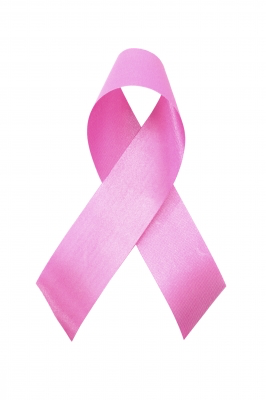 Welcome back everyone to another installment of Health and #WELLNESS WEDNESDAY! Tomorrow is the first day of October — and, of course, October is BREAST CANCER AWARENESS MONTH. So, we’re going to start today with a discussion of the TOP 8 RISK FACTORS FOR BREAST CANCER THAT EVERY WOMAN NEEDS TO KNOW.
Welcome back everyone to another installment of Health and #WELLNESS WEDNESDAY! Tomorrow is the first day of October — and, of course, October is BREAST CANCER AWARENESS MONTH. So, we’re going to start today with a discussion of the TOP 8 RISK FACTORS FOR BREAST CANCER THAT EVERY WOMAN NEEDS TO KNOW.
Now, if you remember from our previous discussions, breast cancer is the most commonly diagnosed cancer among women in the world. According to the WORLD HEALTH ORGANIZATION, it also is the second leading cause of female cancer deaths worldwide — second only to lung cancer.
Indeed, one out of every eight women will be diagnosed with breast cancer at some point in their life. In the United States alone it is estimated that over 220,000 women will be diagnosed with breast cancer — and approximately 40,000 will die from the disease.
And this is, of course, COMPLETELY UNACCEPTABLE! SO — what can we do as women to protect ourselves?? What steps must we take to stay one step ahead of this disease?? Here’s what we do:
1) WE LEARN EVERYTHING WE CAN ABOUT BREAST CANCER.
2) WE DETERMINE WHAT OUR PARTICULAR RISK FACTORS ARE FOR THE DISEASE.
3) WE PLAN ACCORDINGLY.
And having said that, here are the TOP 8 RISK FACTORS FOR BREAST CANCER AMONG WOMEN:
1) GENDER: Breast cancer can affect BOTH females and males. It occurs, however, approximately 100 times more often in women than men.
2) RACE: Most types of breast cancer — not all — are more common among Caucasian women than women of any other race.
3) AGE: Like most other cancers, breast cancer is — for the most part — an age-related disease UNLESS it is clearly genetically indicated. It typically affects women over the age of 55.
4) REPRODUCTIVE AND MENSTRUAL HISTORY: In a nutshell, the longer our cycles of menstruation last, the greater our risk for breast cancer becomes. For example, if we experienced an early first period — before the age of 12 — AND we experience a late menopause — after the age of 55 — then our risk is greater. Similarly, women who had a first child at an older age, or never had children, are at a greater risk for the disease.
5) FAMILY MEDICAL HISTORY: We talk about this a lot when speaking about cancer. If we have a First Degree Relative — this means a parent, sibling or child — with a particular cancer, our risk for developing the same cancer is greater. This is certainly true of breast cancer. AND, our risk is even greater if this FDR was diagnosed BEFORE the age of 50.
6) GENETIC ANOMALY: We’ve all heard about the BRCA1 and BRCA2 genes, right? And, if not, it’s time to listen up Ladies. These are two genes that can carry a mutation — or anomaly — that significantly increases one’s risk not only for breast cancer — but, for ovarian cancer as well. IF you have a family history of breast cancer — AND IF that family member was an FDR — AND IF you are of Ashkenazi Jewish descent — an anomaly of these two genes may be indicated. This puts you at a greater risk for developing breast AND ovarian cancer.
7) PERSONAL MEDICAL HISTORY: For those of us who have already been diagnosed with breast cancer once our risk of developing another breast cancer is greater. Moreover, cancer in one breast can indicate a greater risk for developing a future cancer in the other breast.
8) FIBROSIS — DENSE BREAST TISSUE: Well, this is one I’m personally familiar with. Women with this condition — like me — are at a greater risk for developing breast cancer — which I did. Many states now have passed laws requiring physicians to disclose this information to women whose mammograms indicate this condition.
There we have it Ladies! The Top 8 Risk Factors for Breast Cancer We Need to Know. And, as I always say,
“Knowledge is Power. But, it is a two step process. First, we attain it. Then we express it. Knowledge without action is like a letter without a stamp. If it doesn’t go anywhere, it can’t do any good.”
So, now that we know what our top risk factors are, let’s do something about it. First, talk to your physician. Discuss your particular risk factors. Then, come up with a plan and schedule for your Customized Screening Procedures based upon your personal risks. Take advantage of today’s technology with proper Mammograms, Physical Exams, Self-Exams AND for those of us with fibrosis — a Screening Ultrasound.
And, of course, consider your lifestyle choices. Make sure you’re eating properly. Getting enough exercise. Stopping — or at least trying to stop — tobacco use. Exercising moderation in alcohol use. Because the Best Defense is a Strong Offense! And if we can’t totally prevent breast cancer from occurring, then let’s do everything in our power to CATCH IT EARLY and TREAT IT SUCCESSFULLY!
WE ARE ALL WELLNESS WARRIORS! WE ARE ALL IN THIS TOGETHER! WE WILL BE VICTORIOUS!
Thanks for joining me everyone! Stay in GOOD HEALTH and until next time,
TAKE THE COURSE AND TAKE CHARGE!
TIME FOR REVIEW: For a more complete review of this information, please refer to the Single Source Cancer Course, pages 100 – 107 in Volume 1 and pages 3-9 in Volume 2.
Image courtesy of scottchan at FreeDigitalPhotos.net



Leave a Comment